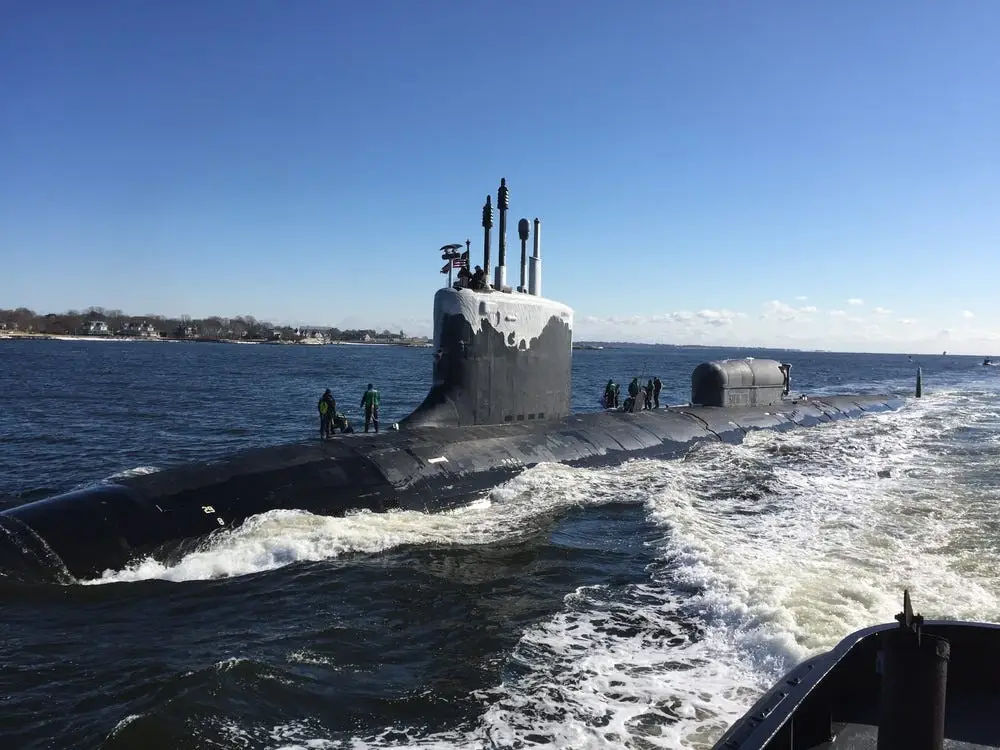London (Parliament Politics Magazine) – The United Kingdom operates a fleet of four ballistic missile submarines, each capable of causing widespread destruction to even the most populous nations. At any moment, at least sixty-four of the United Kingdom’s nuclear weapons are offshore in various ocean parts. The United States, London’s friend, decided not to purchase a critical weapon system that would be the foundation of London’s nuclear arsenal, so London decided to build its fleet instead. Fifty years later, the United Kingdom’s missile submarine force is the sole custodian of the country’s nuclear weapons and continues to serve as a continual deterrence against nuclear attack. Let’s continue our discussion on the nuclear submarines of UK.
Positions of the Nuclear Submarines of UK
One of the five combatant services that make up the Royal Navy is called the Royal Navy Submarine Service. It is frequently referred to as the Silent Service because submarines are generally essential to function without being discovered.
The service currently operates six fleet submarines (SSNs) of the Trafalgar and Astute classes (with two further boats of the Astute class currently under construction), in addition to operating four ballistic missile submarines (SSBNs) of the Vanguard class. These submersibles are all powered by nuclear propulsion.
AUKUS cooperation on nuclear submarine, which poses a serious risk of nuclear proliferation, proves once again that the US & the UK apply double standards to nuclear cooperation. pic.twitter.com/zOXNVypA9C
— Lijian Zhao 赵立坚 (@zlj517) September 22, 2021
History of the UK’s Nuclear Submarines
Dreadnought, the first British nuclear-powered submarine, was launched in 1960. It was constructed around a nuclear reactor manufactured in the United States. This was supplemented by the Valiant class, which was introduced in 1966 and utilised a newly developed Rolls-Royce PWR1 reactor produced in the United Kingdom. The strategic nuclear deterrence of the United Kingdom was handed over from the Royal Air Force to the Royal Navy at midnight on the 30th of June, 1968, which is the 1st of July. Beginning in 1968, the Resolution class of ballistic missile submarines, often known as SSBNs, were put into service as part of the Polaris program to fulfil this mission. These were eventually replaced by submarines of the Vanguard class and the Trident missile system beginning in 1994. The UGM-27 Polaris A-3 missiles they carried were made in the United States.
The Flag Officer Submarines, who also wore the hat of NATO Commander Submarine Force Eastern Atlantic (COMSUBEASTLANT) and were a component of Allied Command Atlantic, relocated to the Northwood Headquarters in 1978 from HMS Dolphin in Gosport.
In 1982, during the Falklands War, the HMS Conqueror made history by being the first nuclear-powered submarine to sink a surface ship successfully. The ship in question was General Belgrano. The Argentine Navy carrier group Task Group 79.1 was tracked by the British warships HMS Splendid and HMS Spartan, but no engagement occurred.
After the Cold War in 1989, the Flag Officer Submarines, also the COMSUBEASTLANT and held the rank of rear admiral, commanded a fleet of thirty submarines. These subs were organized into four squadrons (the First, Second, Third, and Tenth (SSBN)) stationed at three different bases.
UK’s Nuclear Submarines ready to take a hit
In the early 1960s, the Avro Vulcan, Handley Page Victor, and Vickers Valiant formed the so-called “V-Force,” responsible for delivering the United Kingdom’s nuclear force. The Skybolt air-launched ballistic missile, capable of speeds up to Mach 12.4, was planned for installation on the bombers (9,500 miles an hour). Unfortunately, technical difficulties doomed Skybolt, and the United States government scrapped the missile in 1962.
The UK’s nuclear deterrence was in jeopardy due to the cancellation of Skybolt, so the two governments worked feverishly to find a replacement. To replace Skybolt, the United States has offered its new Polaris submarine-launched ballistic missile. Unfortunately, the United Kingdom lacked the missile submarines necessary to transport Polaris.
Like France, the United Kingdom would need at least five ballistic missile submarines to keep up a credible deterrent posture, according to a study. Over time, this would be cut down to just four subs. The submarines would look a lot like the U.S. Navy’s Submarine Class, based on the French Le Redoutable class. Submarines of the Lafayette class of the U.S. Navy’s ballistic missile force have two banks of eight missile tubes. The Royal Navy’s new Resolution-class submarines, in contrast to the Lafayette and Le Redoutable classes, would feature hydroplanes on the bow that could be folded up when docked.
Read More: 4 Amazing Things to do in Chinatown London
Conclusion
The United Kingdom’s nuclear deterrent comprises four vanguard-class submarines commissioned in the mid to late 1990s. The Continuous At Sea Deterrent ensures that at least one nuclear submarine of UK is at sea at all times. The rest are based out of Faslane, part of the Royal Navy’s Clyde base. Currently, up to 40 nuclear warheads can be carried on each submarine’s eight trident missiles. The destructive power of one trident missile is equal to that of eight Hiroshima-sized bombs, and it has a range of 7,500 miles.


